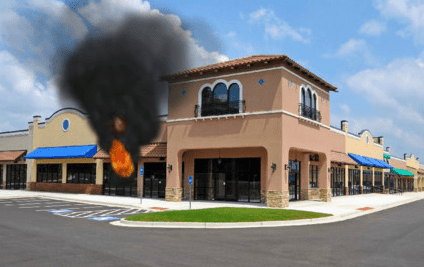 Many first responder training programs use simulation in the development of decision-making competencies. Simulation exercises help develop skills in setting strategy and tactics, in applying policies and procedures and in developing critical thinking skills. How can simulations be used in the development of situational awareness skills?
Many first responder training programs use simulation in the development of decision-making competencies. Simulation exercises help develop skills in setting strategy and tactics, in applying policies and procedures and in developing critical thinking skills. How can simulations be used in the development of situational awareness skills?
The answer lies, in part, in understanding what situational awareness is and how it is developed. However, and equally important, is understanding how situational awareness is lost in the context of the environment first responders work in. It is this component of situational awareness, and it’s application to simulations, that I want to discuss here.
Defining Situational Awareness
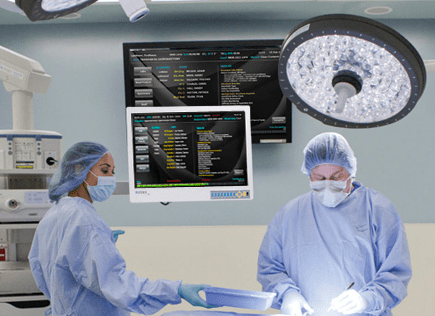
Situational awareness is developed by gathering information (termed clues and cues) about what is happening in the environment around you (in the context of how time is passing). Then, understanding the meaning of that information, but it doesn’t end there. In part, situational awareness is formed by understanding what has happened previously (the things that led up to the current environment you experience) and being able to predict the future events before they unfold (those things that have not yet happened but are anticipated to happen – the outcomes of your actions or inactions).
Clues and Cues (a.k.a. Information)
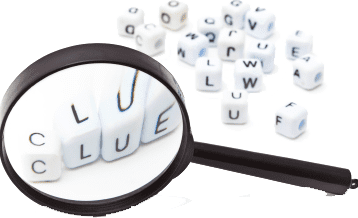 In the perfect world, a decision-maker would only be provided with a shortlist of the most critical clues and cues – the critical information – essential to forming strong situational awareness. Unfortunately, the perfect world seldom exists, leaving decision-makers with the task of having to make sense of a barrage of information (which can contribute to several situational awareness barriers, like: information overload (which can stall decision making), insufficient amount of information (which can lead to flawed assumptions) and inaccurate information (which can lead to flawed perceptions).
In the perfect world, a decision-maker would only be provided with a shortlist of the most critical clues and cues – the critical information – essential to forming strong situational awareness. Unfortunately, the perfect world seldom exists, leaving decision-makers with the task of having to make sense of a barrage of information (which can contribute to several situational awareness barriers, like: information overload (which can stall decision making), insufficient amount of information (which can lead to flawed assumptions) and inaccurate information (which can lead to flawed perceptions).
If the struggles of processing information were not challenging enough, the decision-maker may not have control over the quantity and quality of information needing to be processed and comprehended in the formation of situational awareness. In some contexts, there will be too much information. In other contexts, there may not be enough information. Some of the information will be precise and accurate. Some may be vague and flawed. And on the fly, the decision-maker is trying to make sense of it all.
Mindfulness
 Being aware of your surroundings in context is what some might term “mindfulness.” In 2004, a researcher (Bishop) and his colleagues advanced a definition of mindfulness that sums up the concept nicely for the purpose of our discussion:
Being aware of your surroundings in context is what some might term “mindfulness.” In 2004, a researcher (Bishop) and his colleagues advanced a definition of mindfulness that sums up the concept nicely for the purpose of our discussion:
Mindfulness involves two components. First, the self-regulation of attention so that it focuses on immediate experience, thereby allowing for increased recognition of mental events in the present moment. And second, adopting a particular orientation toward one’s experiences in the present moment, an orientation that is characterized by curiosity, openness, and acceptance.
To be mindful is to be aware of your environment in the context of place and time and avoid judgment by assessing the clues and cues without preconceived notions of what they mean. While this may seem vague, it is a trainable skillset. The military teaches mindfulness to soldiers to help improve their situational awareness.
Sense Making
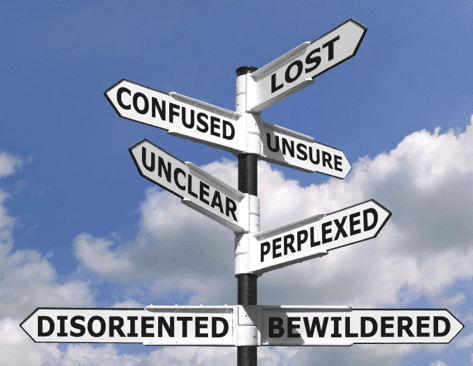 Information, in the absence of context, has little value. The decision-maker must have an understanding of the operational environment and this requires processing clues and cues and making sense out of what is observed and heard. The more complex the environment and the greater the volume of clues and cues, the more challenging the process of sense-making can be. In fact, volumes of information are not what a decision-maker needs. Rather, what is needed is a small amount of the most important information to help form situational awareness and prime, good decision making.
Information, in the absence of context, has little value. The decision-maker must have an understanding of the operational environment and this requires processing clues and cues and making sense out of what is observed and heard. The more complex the environment and the greater the volume of clues and cues, the more challenging the process of sense-making can be. In fact, volumes of information are not what a decision-maker needs. Rather, what is needed is a small amount of the most important information to help form situational awareness and prime, good decision making.
The simulation design
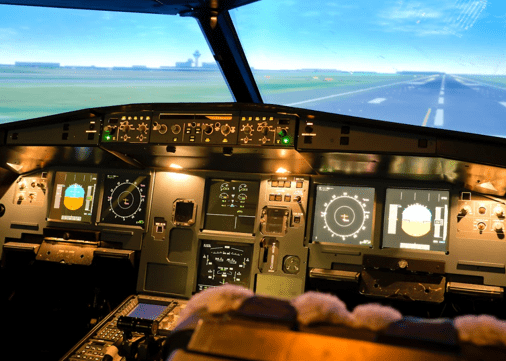 Simulations can be very helpful in teaching strategy and tactics. They are relatively easy to design, can use low-cost software (e.g. SimsUShare) to create realistic scenarios using actual buildings from your town. The objectives can be established and communicated to participants in a relatively easy way. The process of running scenarios over and over again helps develop memory and mindfulness through repetition. All good stuff. One component that can be overlooked in the design of simulation scenarios is making the decision-making environment realistic.
Simulations can be very helpful in teaching strategy and tactics. They are relatively easy to design, can use low-cost software (e.g. SimsUShare) to create realistic scenarios using actual buildings from your town. The objectives can be established and communicated to participants in a relatively easy way. The process of running scenarios over and over again helps develop memory and mindfulness through repetition. All good stuff. One component that can be overlooked in the design of simulation scenarios is making the decision-making environment realistic.
Information Management
The designer of a simulation may script a scenario to ensure the essential information is provided so the decision-maker can form strong situational awareness. When first teaching decision-makers it would be a best practice to only provide them with the small amount of the most critical information they need to manage the incident. This helps the trainee learn how to make decisions based on using the most critical information. In other words, they learn what critical clues and cues they need to know.
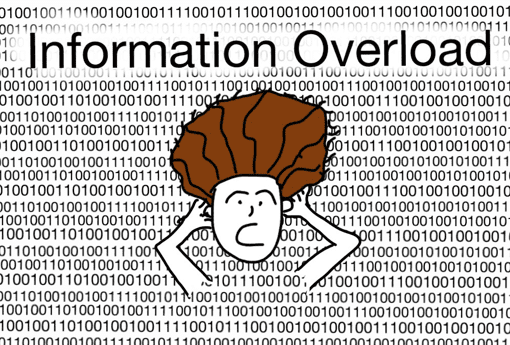 Then, once the trainee gets good at running the scenarios and making decisions, slowly build in some complexity. This can be done by adding additional information that are NOT critical clues and cues. It can also be done by leaving out critical clues and cues altogether. In other words, start making the scenarios realistic. As decision-makers know, in the real world, the quantity and quality of information varies and rarely will be the right amount of high-quality information coming at the right time. The real world is more complicated which requires the decision-maker to sort through information for the important clues and cues, to apply perceptions of information that may not be accurate and to make assumptions to fill in the blanks where information is missing. THAT… is the real world. And that is the environment to be recreated in simulations to improve situational awareness.
Then, once the trainee gets good at running the scenarios and making decisions, slowly build in some complexity. This can be done by adding additional information that are NOT critical clues and cues. It can also be done by leaving out critical clues and cues altogether. In other words, start making the scenarios realistic. As decision-makers know, in the real world, the quantity and quality of information varies and rarely will be the right amount of high-quality information coming at the right time. The real world is more complicated which requires the decision-maker to sort through information for the important clues and cues, to apply perceptions of information that may not be accurate and to make assumptions to fill in the blanks where information is missing. THAT… is the real world. And that is the environment to be recreated in simulations to improve situational awareness.
Learning from Mistakes
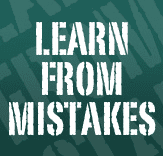 If, during a simulation, a decision-maker does poorly with the management of information and that, in turn, leads to a flawed decision, that is not a failure. In fact, that is success. Learning about how a decision is flawed based on errors in information management during a simulation is much better than learning about it following a real casualty event.
If, during a simulation, a decision-maker does poorly with the management of information and that, in turn, leads to a flawed decision, that is not a failure. In fact, that is success. Learning about how a decision is flawed based on errors in information management during a simulation is much better than learning about it following a real casualty event.
Hindsight Bias
After a casualty event does occur, it is easy to see what information was absent or what perceptions were flawed or what assumptions were erroneous. Hindsight vision is near-perfect because those standing in judgment have the benefit of knowing the outcome. But those who were managing the incident in real-time were not aware of how things  were going to turn out. Hindsight can be a valuable tool when it is used to trace how understanding broke down. When it is used to pass judgment, it is not a tool at all. It is a weapon.
were going to turn out. Hindsight can be a valuable tool when it is used to trace how understanding broke down. When it is used to pass judgment, it is not a tool at all. It is a weapon.
Dr. Gasaway’s Advice
 If you’re going to create and use simulations to train decision-makers (which I think is a great way to develop decision making competence), I would recommend involving currently practicing decision-makers and ask them to offer up recommendations for how to maximize the realism. Ask decision-makers about the stresses and challenges they face while trying to process and comprehend information in real-time. Build that complexity into scenarios. Otherwise, you’re at risk of creating scenarios that are “technically” realistic (i.e., the clues and cues of smoke, fire, changing conditions, etc.) are completely accurate, but the environment in which the commander is operating is not.
If you’re going to create and use simulations to train decision-makers (which I think is a great way to develop decision making competence), I would recommend involving currently practicing decision-makers and ask them to offer up recommendations for how to maximize the realism. Ask decision-makers about the stresses and challenges they face while trying to process and comprehend information in real-time. Build that complexity into scenarios. Otherwise, you’re at risk of creating scenarios that are “technically” realistic (i.e., the clues and cues of smoke, fire, changing conditions, etc.) are completely accurate, but the environment in which the commander is operating is not.
 Action Items
Action Items
1. Engage decision-makers in a discussion about what causes them the most stress and what impacts their situational awareness when they are making decisions in real-time. Make a list and build those barriers into your simulations.
2. Discuss with participants of simulations if the scenarios match the real-world environment they work in – physically, emotionally, psychologically, stressfully, realistically. If it falls short, identify ways to improve realism (with consideration for safety).
3. Consider all the barriers to situational awareness that are present in the real decision-making environment and develop simulations that reproduce realistic environmental factors (e.g., noise, lighting, temperatures, distractions, interruptions, extraneous information, etc.)
_____

If you are interested in taking your understanding of situational awareness and high-risk decision making to a higher level, check out the Situational Awareness Matters Online Academy.
CLICK HERE for details, enrollment options and pricing.
____
Share your comments on this article in the “Leave a Reply” box below. If you want to send me incident pictures, videos or have an idea you’d like me to research and write about, contact me. I really enjoy getting feedback and supportive messages from fellow first responders. It gives me the energy to work harder for you.
Thanks,

Email: Support@RichGasaway.com
Phone: 612-548-4424
SAMatters Online Academy
Facebook Fan Page: www.facebook.com/SAMatters
Twitter: @SAMatters
LinkedIn: Rich Gasaway
Instagram: sa_matters
YouTube: SAMattersTV
iTunes: SAMatters Radio
iHeart Radio: SAMatters Radio

Great article!
I believe simulations are one of the best tools we have to fill the gap that is getting increasingly wider due to fewer and fewer fires. Because we see less real world fires, we do not get the chance to build expansive mental models to assist us in our decision making.
I think that, used properly, simulations can close the gap and allow us to use our RPDM much more effectively.
Thanks for what you do!
Dave,
Thank you for reading the article and for sharing your feedback. I appreciate both very much. It is through sharing if ideas and perspectives that we all build our knowledge.
Rich
Rich,
I do firmly believe that simulation is an invaluable training platform for the fire service. I could easily write a book on the benefits of, and how to properly develop a simulation training program to achieve expected outcomes in a real world operating environment. To your point, can simulation training improve simulation training, the short answer is yes!
But as with any training program, it is but a single resource and should not be considered the end all cure all. However, when combined with other training tools, the positive impact on situaltional awareness is limitless.
Dr. Gillespie,
You are, without dispute, the go-to expert on the use of simulation for developing command competence. I am honored to have your input on this topic and I am thankful for your continued support.
NOTE FOR THE READERS: Look to the post I made on Dr. Gillespie’s doctoral research on the benefits of simulation for developing command competence.
Rich
Pingback: Gasaway’s article hits home “using the simulation environment to improve situational awareness” | SimsUshare : Take Command
Rich,
Thank you again for sharing all your good insight. Having done 100’s of ‘Hot Seat” simulations, a tip I’d like to share that we did years ago is to record various sounds on the fireground and play them during the simulation.
Examples would be the sound of chain saws, breaking glass, vent fans running, sirens, running apparatus, having someone call MayDay or Emergency Traffic (etc) in a frantic voice in a mask, etc. Keep the sound files simple, but use them at appropriate times during the scenario to better create the fireground environment.
I found that using such soundbites heightened the IC’s level of stress, but really, sitting in a chair in a classroom looking at 2 dimensional pics is not fireground reality. And, yes, just doing Hot Seats can be stressful, but when confronted with the additional noise additions, it truly places all participants in a much more ‘aware’ and serious mindset.
Thanks again and hope to see you at FRI,
Katherine
Katherine,
Great addition. Thanks for sharing your experience. I appreciate your support. See you at FRI!
Rich
Excellent post. You hit situational awareness on the head. I first became aware of situational awareness and how it is used to make decisions in the early 90’s. I read Gary Klein’s study of firefighters decision making for DARPA and a light went on. I recognized how I was making decisions on the street. I was at the Institute for Simulation and Training trying to find money to build the high rise sim I had designed for the City of Orlando. I guess I was a generation ahead my time but your work seems to be getting through and making a difference. I applaud your work and your success. I retired in 2000 but continue to work on sim’s and situational awareness in the emergency management area. I recently had a book published by Wiley Publications, Disaster Operations and Decision Making. At the heart of the policy’s and procedures in the book is acquiring and maintaining situational awareness. Simulations are the best way to teach tactical decision making and with today’s tools they can produce training that will translate directly to the field. Fire officers should be constantly training using the computers in the stations or on their personal computers. There is a range of simulations from simple to complex that can be used to train specific skills and decision making. Situational awareness should be at the heart of every company officer and above’s training. Please keep up the good work. Good luck.
Thanks for sharing, Roger and for your contributions to improve responder safety.
It’s great that you elaborated that gathering information and details could help you be aware during different situations. My brother told me last night that he was planning to have a concealed carry license. He asked if I had any idea what would be the best option to have training. Thanks to this informative article, I’ll tell him it will be much better if he consults trusted concealed carry training classes as they can provide more information about the training process.
This blog offers a thorough and insightful examination of how simulation environments can be leveraged to enhance situational awareness for first responders. The emphasis on understanding situational awareness—gathering, interpreting, and predicting based on clues and cues—is crucial for effective decision-making. I appreciate the detailed discussion on how simulations can mimic the complexities of real-world scenarios, including managing information overload and dealing with the inherent unpredictability of emergency situations. The recommendations for integrating feedback from current decision-makers and gradually increasing scenario complexity to reflect real-world challenges are particularly valuable. They ensure that simulations not only build skills but also prepare responders for the nuanced and often chaotic nature of actual incidents. Great guidance on turning simulated errors into learning opportunities—these are the key moments that foster growth and improve real-world performance.